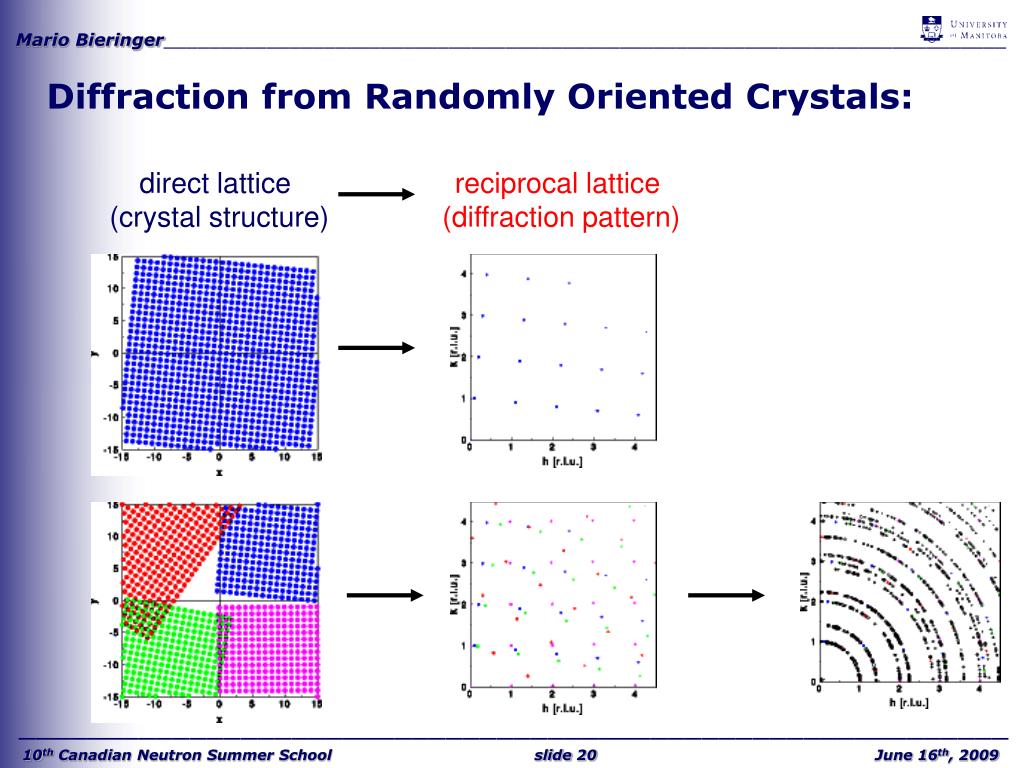

Although simple, Bragg's law confirmed the existence of real particles at the atomic scale, as well as providing a powerful new tool for studying crystals in the form of X-ray and neutron diffraction. The interference is constructive when the phase shift is a multiple of 2 π this condition can be expressed by Bragg's law (see Bragg condition section below) and was first presented by Lawrence Bragg on 11 November 1912 to the Cambridge Philosophical Society. It was proposed that the incident X-ray radiation would produce a Bragg peak if their reflections off the various planes interfered constructively. Lawrence Bragg explained this result by modeling the crystal as a set of discrete parallel planes separated by a constant parameter d. The derived Bragg's law is a special interpretation of Laue diffraction, where the Braggs interpreted the constructive Laue-Bragg interference in a geometric way by reflection of waves from crystal lattice planes, such that the path-difference becomes a multiple of the incident wavelength.Īccording to the 2 θ deviation, the phase shift causes constructive (left figure) or destructive (right figure) interferences. They found that these crystals, at certain specific wavelengths and incident angles, produced intense peaks of reflected radiation. History X-rays interact with the atoms in a crystal.īragg diffraction (also referred to as the Bragg formulation of X-ray diffraction) was first proposed by Lawrence Bragg and his father, William Henry Bragg, in 1913 in response to their discovery that crystalline solids produced surprising patterns of reflected X-rays (in contrast to that of, say, a liquid). However, it applies to all sorts of quantum beams, including neutron and electron waves at atomic distances if there are a large number of atoms, as well as visible light with artificial periodic microscale lattices. Such law had initially been formulated for X-rays upon crystals. It encompasses the superposition of wave fronts scattered by lattice planes, leading to a strict relation between wavelength and scattering angle, or else to the wavevector transfer with respect to the crystal lattice. In physics and chemistry, Bragg's law, Wulff–Bragg's condition or Laue–Bragg interference, a special case of Laue diffraction, gives the angles for coherent scattering of waves from a large crystal lattice. The method also revealed the structure and function of many biological molecules, including vitamins, drugs, proteins and nucleic acids such as DNA.Physical law regarding scattering angles of radiation through a medium In its first decades of use, this method determined the size of atoms, the lengths and types of chemical bonds, and the atomic-scale differences among various materials, especially minerals and alloys.

Since many materials can form crystals-such as salts, metals, minerals, semiconductors, as well as various inorganic, organic and biological molecules-X-ray crystallography has been fundamental in the development of many scientific fields. From this electron density, the mean positions of the atoms in the crystal can be determined, as well as their chemical bonds, their disorder and various other information. By measuring the angles and intensities of these diffracted beams, a crystallographer can produce a three-dimensional picture of the density of electrons within the crystal.

X-ray crystallography X-ray crystallography is a tool used for identifying the atomic and molecular structure of a crystal, in which the crystalline atoms cause a beam of incident X-rays to diffract into many specific directions.


 0 kommentar(er)
0 kommentar(er)
